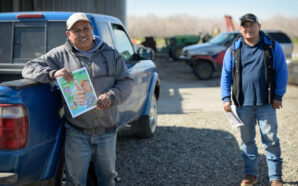Suzanne Potter
California News Service
SACRAMENTO, Calif. – California has improved child well-being significantly since 2014 – but still needs to shrink the severe racial disparities that persist, according to a new report. The “2017 Race for Results” report from the Annie E. Casey Foundation comes out every three years and the latest, the second in the series, shows the changing demographics.
Fully 75 percent of California’s kids are people of color and half have at least one immigrant parent or are immigrants themselves.
Laura Speer, the associate director of policy reform and advocacy at the Foundation, says the decision to end the DACA program is clouding the future for hundreds of thousands of young people in the Golden State.
“Ensuring that the Dreamers are able to stay with their families and in their communities and to continue to be able to contribute to our country,” she says. “We need them in terms of the long-term success of our country, and we should allow them to be able to stay.”
The report also found that President Trump’s immigration raids are creating toxic stress for immigrant children who fear losing a parent or being deported themselves.
Mike Odeh, director of health policy at the nonprofit Children Now, says in 2016 California lessened the burden on immigrant families by expanding Medi-Cal to cover undocumented children – leading more than 200,000 kids to sign up. And the overall rate of uninsured children fell by 70 percent since 2014, thanks to the Affordable Care Act.
However, he warns that Trump’s efforts to undermine the program could reverse that progress.
“There’s the direct threat of taking away health care and destabilizing the market, restructuring Medicaid,” he says. “And those would have really dire consequences particularly because 3 out of 5 kids in California rely on Medi-Cal and the Affordable Care Act marketplaces for their coverage.”
Josefina Ramirez Notsinneh, also with Children Now, says the state raised the minimum wage last year, which is a boon to low-income families, but then had to restructure child care subsidies so families wouldn’t lose out.
“Some families were getting bumped out of their childcare because they were making more money,” she notes. “The state has increased the state median income eligibility so there’s going to be more families that are going to be eligible to receive child care subsidies.”
The state also recently expanded the unpaid parental leave policy to include people who work for businesses with fewer than 50 employees.






